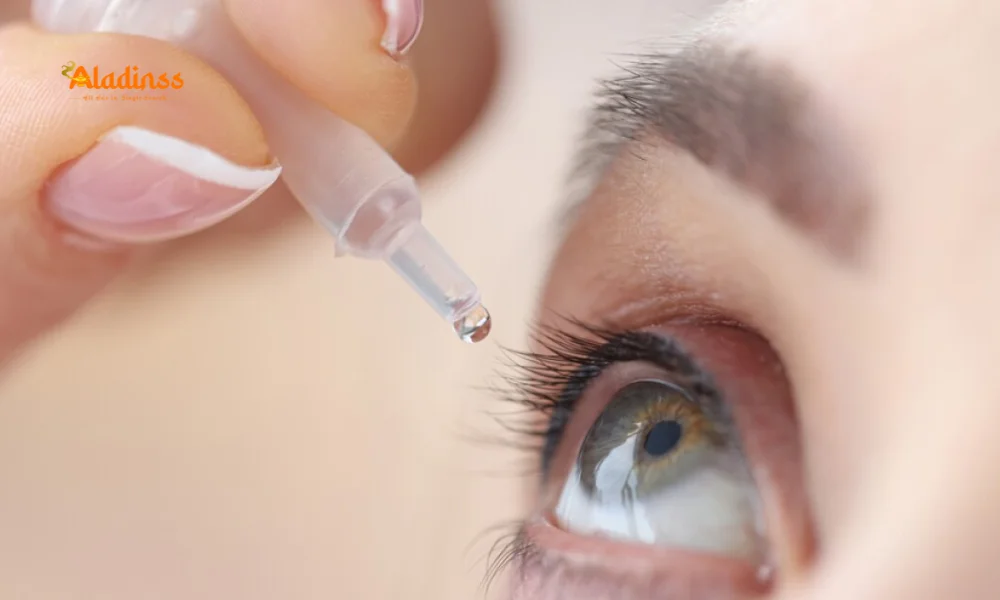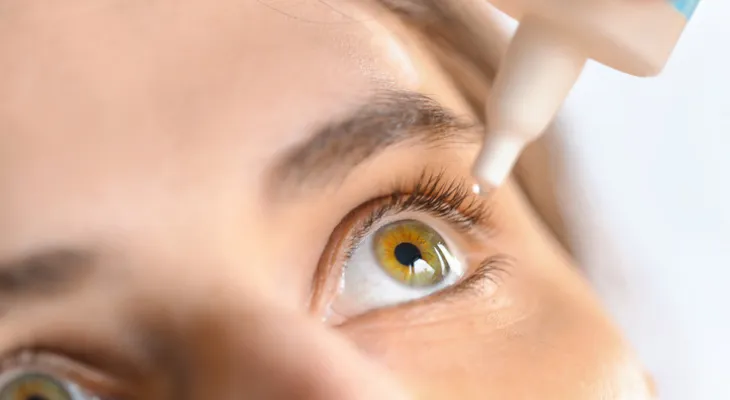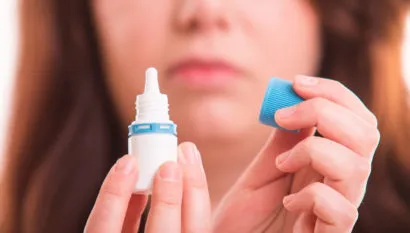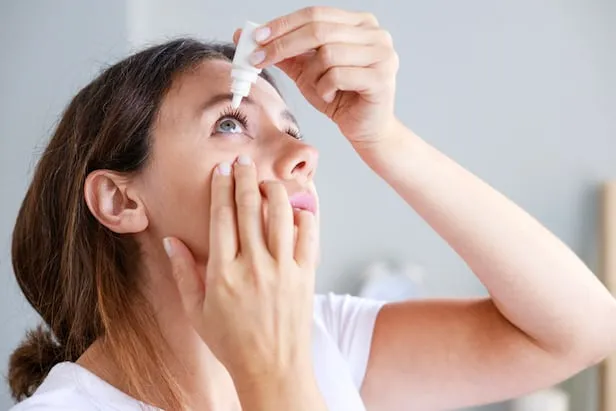Eye Drops as Glasses Alternative: Breakthrough Study on Presbyopia Treatment

Eye Drops as Glasses Alternative: Breakthrough Study on Presbyopia Treatment

As we age, the frustration of squinting at fine print or constantly misplacing reading glasses becomes all too familiar. Presbyopia, the age-related loss of near vision that typically strikes in our mid-40s, affects hundreds of millions worldwide, forcing many to rely on corrective lenses. But a groundbreaking study presented at the 43rd Congress of the European Society of Cataract and Refractive Surgeons (ESCRS) in Copenhagen offers hope: specially formulated eye drops could serve as a viable alternative to glasses, providing sustained improvement in near vision without the need for surgery or daily eyewear. This latest development in ophthalmology, detailed in a retrospective analysis of 766 patients, shows that twice-daily applications of pilocarpine-diclofenac drops enabled most participants to read two or more extra lines on the Jaeger eye chart, with effects lasting up to two years. With Google Trends spiking for searches like "presbyopia eye drops" and X buzzing with #PresbyopiaRelief, this non-invasive option is capturing attention as a game-changer for those seeking freedom from glasses.
Understanding Presbyopia: The Age-Related Vision Challenge

Presbyopia occurs when the eye's lens loses flexibility, making it difficult to focus on close objects. This natural part of aging usually begins around age 40 and worsens by the 60s, impacting daily tasks like reading, using smartphones, or threading a needle. Traditional management includes reading glasses, bifocals, or progressive lenses, but these can be inconvenient, especially for active individuals or those in professions requiring precise vision without eyewear. Surgical options like LASIK or lens implants exist but carry risks and are not suitable for everyone.
The ESCRS study highlights a pharmacological breakthrough, addressing the unmet need for a simple, non-invasive solution. Conducted at the Center for Advanced Research for Presbyopia in Buenos Aires, Argentina, the research builds on decades of work by the late Dr. Jorge Benozzi and his daughter, Dr. Giovanna Benozzi, who presented the findings. By evaluating real-world outcomes over two years, the study provides robust evidence that eye drops can significantly enhance uncorrected near visual acuity, potentially reducing reliance on glasses for millions.
Early symptoms of presbyopia include holding reading material at arm's length or experiencing eye strain after short reading sessions. If left unmanaged, it can lead to headaches and decreased productivity. This study's results suggest that proactive intervention with eye drops could mitigate these issues, offering a convenient alternative that fits seamlessly into daily routines.
The Science Behind the Eye Drops: Pilocarpine and Diclofenac

At the heart of this innovation are two key ingredients: pilocarpine and diclofenac. Pilocarpine, a miotic agent, works by constricting the pupil and contracting the ciliary muscle, which adjusts the lens shape to improve focus on near objects. This mimics the eye's natural accommodation process, temporarily restoring the flexibility lost to aging. Diclofenac, a non-steroidal anti-inflammatory drug (NSAID), complements pilocarpine by reducing potential irritation, inflammation, and discomfort, ensuring better tolerability.
The study tested three concentrations of pilocarpine (1%, 2%, and 3%) combined with a fixed dose of diclofenac. Results were dose-dependent: nearly 99% of patients on the 1% formulation achieved two or more lines of improvement on the Jaeger chart, ideal for mild presbyopia. For moderate cases, the 2% dose helped 69% read three extra lines, while the 3% concentration benefited 84% of those with severe presbyopia. This personalization allows eye care professionals to tailor treatment based on baseline Jaeger scores, optimizing outcomes for individual needs.
Administered twice daily, with an optional third dose as needed, the drops begin working within an hour, peaking at 3.45 Jaeger lines of improvement. Unlike over-the-counter reading glasses, which provide static correction, these drops dynamically enhance the eye's focusing ability, offering a more natural vision experience. Long-term data from the study, spanning two years, demonstrates sustained efficacy, with many patients maintaining gains without progression of their condition.
This combination therapy represents a significant advancement, as previous pilocarpine-only drops often caused brow ache or dim vision in low light. The addition of diclofenac mitigates these issues, making the treatment suitable for broader use. Researchers note that while not a cure, it effectively bridges the gap between glasses and invasive procedures, empowering patients with greater autonomy over their vision health.
Study Results: Impressive Gains in Near Vision
The retrospective analysis involved 766 patients aged around 55, all presenting with Jaeger 3 or worse presbyopia. Over two years, the drops consistently improved uncorrected near visual acuity across all groups. In the 1% pilocarpine cohort (148 patients), 99% reached optimal near vision, reading at least two additional lines. The 2% group (248 patients) saw 69% achieve three or more lines, and the 3% group (370 patients) reported 84% with similar gains.
These improvements translated to practical benefits: participants could comfortably read menus, labels, or books without aids. Follow-up assessments confirmed durability, with minimal drop-off in efficacy. Dr. Benozzi emphasized that the therapy's success rate underscores its potential as a first-line option, particularly for those dissatisfied with glasses' aesthetics or comfort.
Compared to FDA-approved drops like Vuity (pilocarpine 1.25%), this formulation's diclofenac component enhances safety and comfort, reducing common complaints. The study's real-world design adds credibility, reflecting outcomes in diverse patient populations rather than controlled trials. As awareness grows, with trending queries on "eye drops vs glasses," this could shift paradigms in presbyopia care.
Safety Profile and Side Effects: Mild and Manageable
Safety was a cornerstone of the ESCRS study, with most side effects proving mild and transient. Common reactions included temporary blurred or dim vision (lasting 15-30 minutes post-application), mild eye irritation upon instillation, and occasional headaches. These occurred in under 10% of users and diminished with consistent use as the eyes adapted. Serious adverse events, such as retinal detachment, were exceedingly rare, affecting less than 0.1% of participants.
ESCRS President-Elect Prof. Burkhard Dick commended the tolerability but called for multi-center trials to validate long-term safety, noting potential risks from chronic NSAID use like subtle corneal changes. Patients with glaucoma or allergies to the components were excluded, emphasizing the need for professional consultation before starting.
In practice, the drops' profile compares favorably to surgical risks (e.g., dry eyes post-LASIK) or glasses-related issues (e.g., fogging during pandemics). For those over 40 grappling with presbyopia, this low-risk alternative could enhance quality of life, reducing the social stigma of "cheaters" and boosting confidence in professional settings.
Monitoring is key: regular eye exams ensure ongoing suitability, especially as presbyopia progresses. The study's two-year horizon provides reassurance, but experts advocate for personalized dosing to minimize any discomfort.
Dosage and Usage: Tailored for Effectiveness
Usage is straightforward: one drop per eye twice daily, morning and evening, with an optional third dose for demanding visual tasks. Dosage varies by severity—lower for early-stage presbyopia (Jaeger 3-5) and higher for advanced (Jaeger 6+). This approach maximizes benefits while minimizing exposure.
Patients reported peak effects within an hour, lasting 6-8 hours, aligning with daily needs. Storage requires a cool, dark place, and hygiene—clean hands and proper tip handling—prevents contamination. For best results, integrate with habits like good lighting and screen breaks to reduce overall eye strain.
This flexibility appeals to varied lifestyles: professionals can dose before meetings, while retirees appreciate the simplicity over fumbling with glasses. As #EyeDropsRevolution trends on X, users share stories of ditching readers for drops, highlighting real-world applicability.
Expert Opinions: A Promising Yet Evolving Option
Dr. Benozzi describes the drops as "evidence-based pharmacology expanding presbyopia care beyond glasses and surgery," noting reduced dependence on aids for enhanced convenience. Prof. Dick echoes enthusiasm but urges caution: "Broader studies are essential to confirm widespread safety." This balanced view positions the therapy as a complementary tool, not a universal fix.
Ophthalmologists anticipate integration into routines, especially for non-surgical candidates. Compared to monovision contacts, drops offer bilateral correction without adaptation periods. Future research may explore combinations with digital therapeutics for holistic management.
Global rollout could democratize access, particularly in underserved areas where glasses are costly. With presbyopia affecting 1.8 billion by 2030, this innovation arrives timely, promising equitable vision health.
Why This Matters: Revolutionizing Vision Care
This study signals a shift from corrective to restorative eye care, empowering aging populations. By alleviating glasses' hassles—lost pairs, smudges, or style mismatches—it fosters independence. Economic implications include lower healthcare costs, as drops may prove cost-effective over time versus frequent lens replacements.
Patient testimonials, emerging on platforms like X, praise the liberation: "Finally, clear text without reaching for specs!" As research progresses, expect refinements, perhaps extended-release formulas for once-daily use. For now, this ESCRS revelation offers a glimpse of a glasses-free future, one drop at a time.
Consulting an eye specialist remains crucial to determine suitability, ensuring this alternative enhances rather than replaces professional guidance. With momentum building, presbyopia management enters an exciting era.
Comment / Reply From
No comments yet. Be the first to comment!






